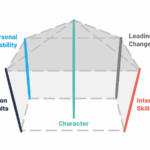As you are faced with decisions that seem emotionally, politically tough on the surface, what influences your decisions? How does your decision-making process shift when you think of it through a lens of legacy?
I love this question, or some version of it. When I pose it to clients, friends, family, and myself it’s one that requires a few days to marinate. Another version that sometimes resonates more when asked: What is the fingerprint you want to leave on your community/company/family?
It’s the type of question that asks you to think beyond the immediate issues facing you today. To think about more than just yourself and the current influences, politics, and drama. It asks you to dream and use your imagination.
As I observe CEOs and executive boards digging in on issues that negatively impact their employees for what seems like immediate, self-serving reasons I always wonder, “Who is asking them the most important question? Who is asking them if this is really how they want to be remembered?”
While I come from the world of business and financial services, I also operate from a mindset of smart, happy people are motivated to create high functioning, great places to work.
As you are faced with decisions that seem emotionally, politically tough on the surface, how does your decision-making process shift when you think of it through a lens of legacy?
One of the best compliments I can ever receive is when former employees share their time with my department was one filled with a sense of purpose, productivity, humanity, positive energy, and authentic, genuine care.
It’s important to note that all my teams operated in times of massive change. Heck, we went through two major mergers/acquisitions in less than five years. We reorganized three times. And we went through two rounds of high impact displacements. Yet, we always chose the path of people first. Why? Because early in my leadership tenure I made a mindful choice about what legacy I wanted to leave behind.
If you haven’t already asked yourself that question, it’s worth pondering. Maybe use it as a journal prompt, or a discussion topic in your next leadership meeting or coaching session. No matter what, just do it.







